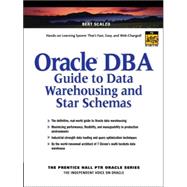
| Acknowledgments | p. xvii |
| Introduction | p. xix |
| What Is a Data Warehouse? | p. 1 |
| The Nature of the Beast | p. 2 |
| Data Warehouse vs. Big Database | p. 4 |
| Operational Data Stores Don't Count | p. 7 |
| Executive Information Systems Don't Count | p. 9 |
| Warehouses Evolve without Phases | p. 10 |
| The Warehouse Roller Coaster | p. 12 |
| Software Architecture | p. 13 |
| Business Intelligence Options | p. 15 |
| Oracle Version Options | p. 17 |
| Oracle Instance Options--Querying | p. 22 |
| Oracle Instance Options--Loading | p. 26 |
| Recommended Oracle Architecture | p. 32 |
| Great Operating System Debate | p. 33 |
| The Great Programming Language Debate | p. 35 |
| The Serial vs. Parallel Programming Debate | p. 35 |
| Hardware Architecture | p. 41 |
| Four Basic Questions | p. 42 |
| How Many CPUs? | p. 43 |
| How Much Memory? | p. 51 |
| How Many of What Disks? | p. 53 |
| Recommended Hardware Architecture | p. 58 |
| The Great Vendor Debate | p. 60 |
| The 32- vs. 64-Bit Oracle Debate | p. 61 |
| The Raw vs. Cooked Files Debate | p. 62 |
| The Need for Logical Volume Managers | p. 64 |
| Star Schema Universe | p. 67 |
| The Rationale for Stars | p. 68 |
| Star Schema Challenges | p. 69 |
| Modeling Star Schemas | p. 71 |
| Avoid Snowflakes | p. 73 |
| Dimensional Hierarchies | p. 76 |
| Querying Star Schemas | p. 78 |
| Fact Table Options | p. 79 |
| When Stars Implode | p. 83 |
| Tuning Ad-Hoc Queries | p. 85 |
| Key Tuning Requirements | p. 86 |
| Star Optimization Evolution | p. 87 |
| First-Generation | p. 88 |
| Second-Generation | p. 89 |
| Third-Generation | p. 90 |
| Fourth-Generation | p. 93 |
| Evolutionary Summary | p. 95 |
| Star Transformation Questions | p. 96 |
| Initialization Parameters | p. 99 |
| Star Schema Index Design | p. 102 |
| Cost-Based Optimizer | p. 108 |
| Some Parting Thoughts | p. 109 |
| Loading the Warehouse | p. 113 |
| What About ETL Tools? | p. 114 |
| Loading Architecture | p. 121 |
| Upstream Source Data | p. 123 |
| Transformation Requirements | p. 125 |
| Transform, Then Load | p. 126 |
| Scenario 1 | p. 127 |
| Scenario 2 | p. 131 |
| Scenario 3 | p. 134 |
| Scenario 4 | p. 136 |
| Scenario 5 | p. 138 |
| Load, Then Transform | p. 142 |
| Deploying the Loading Architecture | p. 146 |
| Implementing Aggregates | p. 147 |
| What Aggregates to Build? | p. 148 |
| Loading Architecture | p. 150 |
| Aggregation by Itself | p. 153 |
| Scenario 1 | p. 156 |
| Scenario 2 | p. 159 |
| Scenario 3 | p. 162 |
| Use Materialized Views | p. 163 |
| Partitioning for Manageability | p. 169 |
| A Plethora of Design Options | p. 170 |
| Logical Partitioning Design | p. 172 |
| Simple Partitioning in 8i | p. 175 |
| Simple Partitioning in 9i | p. 177 |
| Complex Partitioning in 8i | p. 179 |
| Complex Partitioning in 9i | p. 183 |
| Partition Option Benchmarks | p. 187 |
| Operational Issues and More | p. 189 |
| Backup and Recovery | p. 190 |
| Space Management | p. 192 |
| Extent Management | p. 200 |
| Updates and Patches | p. 201 |
| Index | p. 205 |
| Table of Contents provided by Ingram. All Rights Reserved. |
The New copy of this book will include any supplemental materials advertised. Please check the title of the book to determine if it should include any access cards, study guides, lab manuals, CDs, etc.
The Used, Rental and eBook copies of this book are not guaranteed to include any supplemental materials. Typically, only the book itself is included. This is true even if the title states it includes any access cards, study guides, lab manuals, CDs, etc.